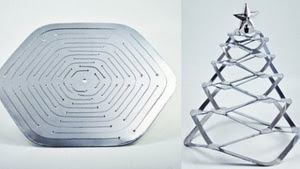iPhone is a powerful name. It conjures up a the vision of a meticulously crafted phone, something that's a pleasure to hold and pleasant to look at. Most of all it makes you think of an Apple device. Well in Brazil, that's not necessarily the case. The "iphone" that came out there this week rocks Android 2.3.
The phone comes from a Brazilian electronics company called Gradiente secured exclusive rights to the "iPhone" name in the country back in 2008, rights that it will continue to hold until 2018. As such, the new Brazilian iPhone is very much the opposite of the one you usually think of. In addition to running Gingerbread, it boasts a 320-by-480 pixel display, a total lack of multi-touch functionality, a 700MHz single-core ARM processor, and 2GB of storage. One more key difference: it has no capital 'P'. Sounds enticing, no? h
According to the Associated Press, Gradiente says they're only using the name now because they were busy trying to "conclude a corporate restructuring process that ended earlier this year." And they have no plans on stopping if they can avoid it. In a statement the firm said:
The phone comes from a Brazilian electronics company called Gradiente secured exclusive rights to the "iPhone" name in the country back in 2008, rights that it will continue to hold until 2018. As such, the new Brazilian iPhone is very much the opposite of the one you usually think of. In addition to running Gingerbread, it boasts a 320-by-480 pixel display, a total lack of multi-touch functionality, a 700MHz single-core ARM processor, and 2GB of storage. One more key difference: it has no capital 'P'. Sounds enticing, no? h
According to the Associated Press, Gradiente says they're only using the name now because they were busy trying to "conclude a corporate restructuring process that ended earlier this year." And they have no plans on stopping if they can avoid it. In a statement the firm said:
So far, Gradiente claims to have heard not a peep from the real iPhone people regarding the use of the name, and there's no doubt they'll continue to use it as long as they can, probably hoping their stylization of the name as "iphone" can buy them some time if nothing else. More here."In Brazil, Gradiente has the exclusive right to use the iPhone brand. This company will adopt all the measures used by companies around the world to preserve its intellectual property rights."







.jpg)








































